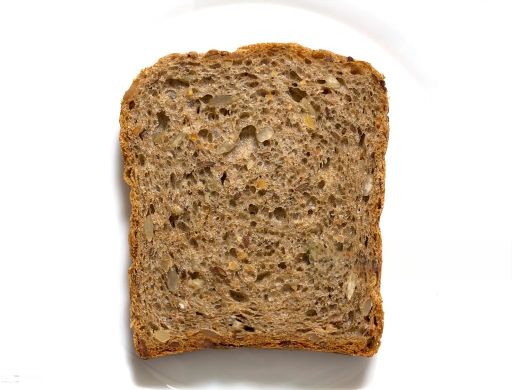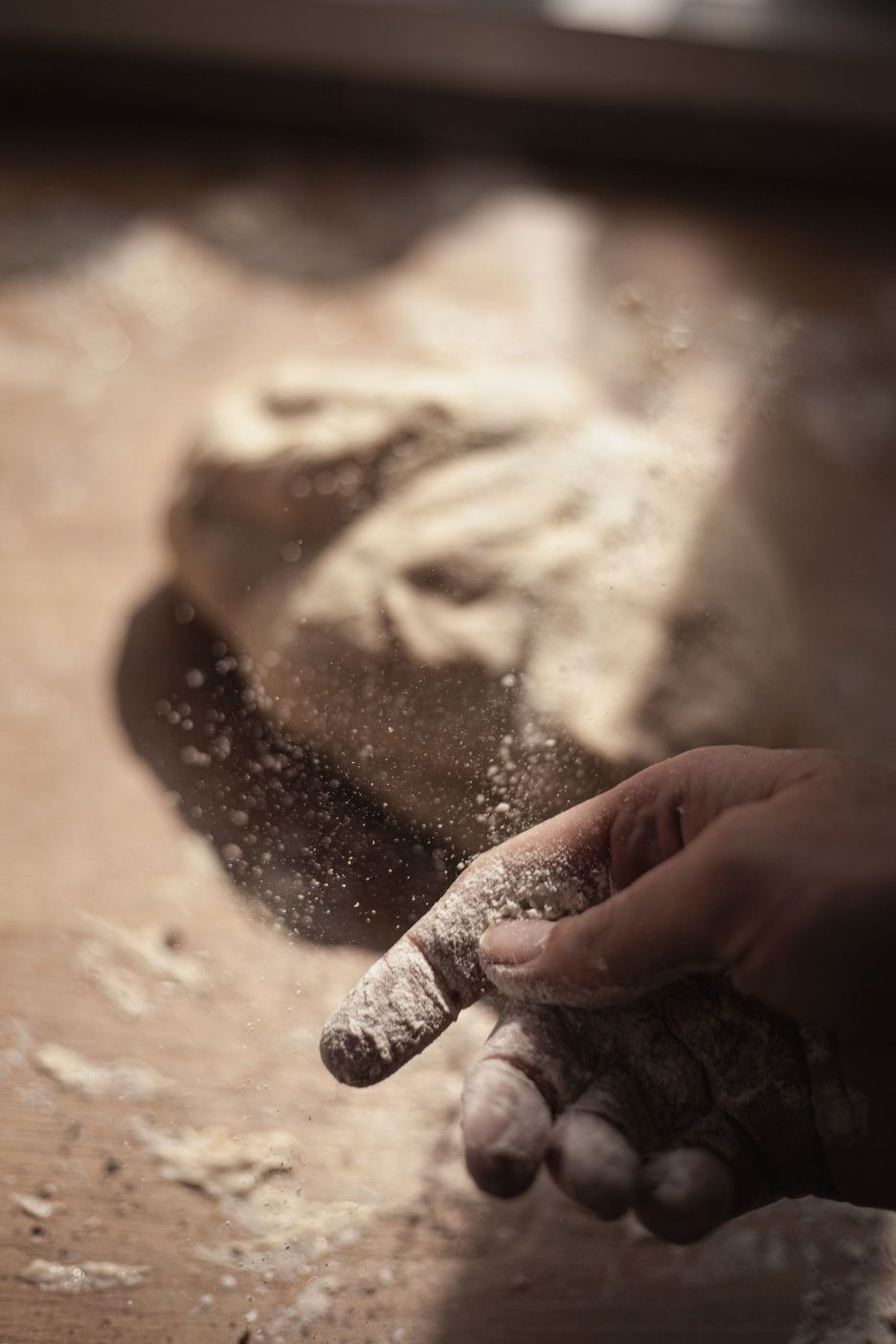Whole wheat bread, often touted as a healthier alternative to white bread, has gained popularity in recent years due to its perceived health benefits.
While it does offer more nutrients and fiber, many people find the taste less appealing than its refined counterpart and wonder why whole wheat bread tastes so bad.
In this article, I’ll reveal the reasons behind the unappealing taste of whole wheat bread and provide tips on how to make whole wheat bread taste better. Let’s dive in.
Why Does Whole Wheat Bread Taste So Bad – Revealed
The distinct taste of whole wheat bread can be attributed to its unique composition and processing.
Let’s explore why some people find the flavor of whole wheat bread less appealing than white bread and dive deeper into these reasons:
1. Stronger Flavor
Whole wheat bread is renowned for its nuttier and more robust flavor compared to the milder taste of white bread.
This robust flavor is a result of the whole wheat flour, which includes the bran and germ, where much of the grain’s flavor resides.
While some people appreciate this hearty taste, others find it overwhelming or even bitter.
The intensity of flavor can be off-putting to those who are accustomed to the relatively neutral taste of white bread.
2. Bitterness from Bran
Whole wheat bread is often lauded for its nutritional content, mainly due to the inclusion of bran, which is packed with fiber and essential nutrients.
However, the same bran also contains bitter-tasting compounds such as phenolic acids and tannins.

These bitter compounds are released during the bread-making process and can contribute to the bread’s overall bitter profile.
Individuals with a preference for milder flavors find this bitterness displeasing, especially when contrasted with the sweetness of white bread.
3. Texture Distinctions
Whole wheat flour has a coarser texture compared to finely milled refined white flour.
The presence of bran particles in whole wheat flour can result in a grittier or sandier mouthfeel in the bread.
This texture difference can be a significant factor in why some people find whole wheat bread less appealing, as they prefer the smoother and softer texture of white bread.
4. Impact of Gluten
Gluten is a protein found in wheat that plays a crucial role in bread-making, providing elasticity and structure to the dough.
Whole wheat flour generally contains more gluten than white flour due to its higher protein content.
While gluten is essential for bread’s structure, it can also contribute to a chewy and dense texture, which some individuals do not enjoy.
Those who are accustomed to the light and airy texture of white bread find the denseness of whole wheat bread less appealing.
5. Familiarity Factor
The human palate is often influenced by familiarity and habit.

People who have grown up consuming primarily white bread find the taste of whole wheat bread initially less appealing simply because it represents a departure from their accustomed flavor.
Overcoming this familiarity bias requires time and repeated exposure to the taste and texture of whole wheat bread.
How To Make Whole Wheat Bread Taste Better? 5 Tips
Making whole wheat bread taste better is all about enhancing its flavor and texture while still maintaining its health benefits.
Here are 5 tips to make your whole wheat bread more enjoyable:
1. Opt For Quality Flour
Choosing the right whole wheat flour can have a profound impact on the taste of your bread.

It’s essential to seek out high-quality brands that prioritize freshness and proper storage.
This is crucial because whole wheat flour contains bran, which has compounds that can taste bitter when they go rancid. Fresh flour ensures that these bitter notes are kept at bay.
When you opt for quality flour, you’re starting with a solid foundation for your whole wheat bread, setting the stage for a more palatable end product.
2. Mix With White Flour
A straightforward method to mitigate the bitterness of whole wheat bread is to blend it with white flour.
This approach creates a hybrid dough that retains the nutritional benefits of whole wheat while improving the texture and overall flavor.
Common Ratios:
- Equal Parts: Start with a 50/50 mix of white and whole wheat flour. It maintains nutrition while reducing bitterness.
- 2:1 Ratio (White to Whole Wheat): For a lighter, fluffier result with mild flavor, try two parts white to one part whole wheat flour.
- 3:1 Ratio (White to Whole Wheat): Get even closer to white bread texture and taste with a 3:1 mix.
Mixing white flour into your whole wheat dough offers a compromise, providing a lighter and less bitter outcome without completely sacrificing the wholesome qualities of whole wheat.
3. Add Natural Sweeteners
Balancing bitterness with sweetness is a well-established technique in the culinary world.
To counteract the bitter notes in your whole wheat bread, consider incorporating natural sweeteners such as honey or maple syrup into your recipes.
These sweeteners not only add a pleasant sweetness but also bring their unique flavors to the table.
By using natural sweeteners, you’re enhancing the overall taste profile of your bread, making it more appealing to those who might find whole wheat’s natural bitterness off-putting.
4. Incorporate Flavorsome Ingredients
To further enhance the flavor of your whole wheat bread, introduce complementary ingredients.
Nuts, seeds, and dried fruits can be wonderful additions to your dough. They not only provide interesting textures but also bring new flavors to the mix.

By adding these elements, you’re creating a delightful contrast in both taste and mouthfeel, making your whole wheat bread a more exciting and enjoyable culinary experience.
5. Experiment With Herbs and Spices
Herbs and spices have the power to transform the taste of your whole wheat bread.
Consider incorporating herbs like rosemary for an aromatic, savory twist or spices like cinnamon for a warm and inviting flavor.
These additions can take your bread to new heights of flavor complexity.
By experimenting with herbs and spices, you’re infusing your whole wheat bread with a rich taste that goes beyond the traditional, making it stand out in both flavor and aroma.
Why Does White Bread Taste Better? Top 4 Reasons
White bread often tastes better due to its specific characteristics and the way it’s processed.
Its pleasant taste isn’t just a coincidence; rather, it’s a result of a combination of factors, from its mild flavor to its unique texture and cultural influences
Here are the 4 reasons why white bread tastes more appealing:
1. Lighter Texture
White bread stands out for its distinctive texture. It tends to be softer and lighter in comparison to whole wheat or whole grain bread.

This softness comes from the refined flour used in making white bread, which results in a smoother, almost melt-in-your-mouth sensation when you take a bite.
This particular texture is more pleasing to some individuals because it lacks the coarser and denser feel of whole wheat alternatives.
It’s like comparing the fluffiness of a cloud to the sturdiness of a brick.
2. Mild Flavor
Another significant factor in white bread’s appeal is its mild flavor profile. The refining process removes the bran and germ, which contain some of the stronger and nuttier flavors found in whole wheat or whole grain bread.
As a result, white bread tends to have a simpler and less complex taste.
The absence of these robust flavors makes white bread more accessible and enjoyable to those who prefer a subtler taste in their bread.
3. Versatility
White bread is renowned for its versatility in the kitchen. Its neutral flavor and soft texture make it an ideal choice for a wide range of culinary applications.
You can use it for classic sandwiches, where it acts as a blank canvas that complements various fillings, from deli meats to veggies.
It toasts beautifully, becoming golden brown and crispy, and can serve as a perfect base for toppings like butter, jam, or avocado.
Furthermore, white bread often appears as a side in many dishes, soaking up sauces and gravies due to its ability to adapt and enhance the flavors it encounters.
4. Cultural Preference
Taste preferences are not solely dictated by personal preference; they can also be deeply influenced by cultural and regional factors.
In some cultures or geographic regions, white bread is the traditional or preferred choice for specific dishes.
These cultural associations can have a powerful impact on how people perceive the taste of white bread.
For instance, in some countries, white bread is used in traditional recipes that have been passed down through generations, leading to a strong cultural connection to its flavor and texture.
Why Does Whole Wheat Bread Taste So Bad – Conclusion
The question, “Why does whole wheat bread taste so bad?” has multifaceted answers rooted in the composition of the wheat itself.
Understanding these factors will allow you to make informed choices about your bread preferences.
While whole wheat bread’s taste does not suit everyone, there are numerous ways to enhance its flavor and make it a delightful addition to your diet.
Experiment, mix, and match ingredients to find your perfect whole wheat bread recipe that pleases both your taste buds and your health-conscious mind.
Frequently Asked Questions
Is Whole Wheat Bread Bad for You?
Whole wheat bread is considered a healthy choice due to its higher fiber and nutrient content compared to refined white bread.
It can support your digestive health, provide essential vitamins and minerals, and help regulate blood sugar.
However, individual dietary needs vary, and portion control is important. Some people with specific dietary restrictions or sensitivities need to choose alternative options. In moderation and as part of a balanced diet, whole wheat bread is not bad for you.
Does Toasting Whole Wheat Bread Make It Taste Better?
Toasting whole wheat bread can enhance its flavor and texture. The heat caramelizes the sugars on the bread’s surface, creating a pleasant toasted taste. It also adds a slight crunchiness, which many people find appealing.

